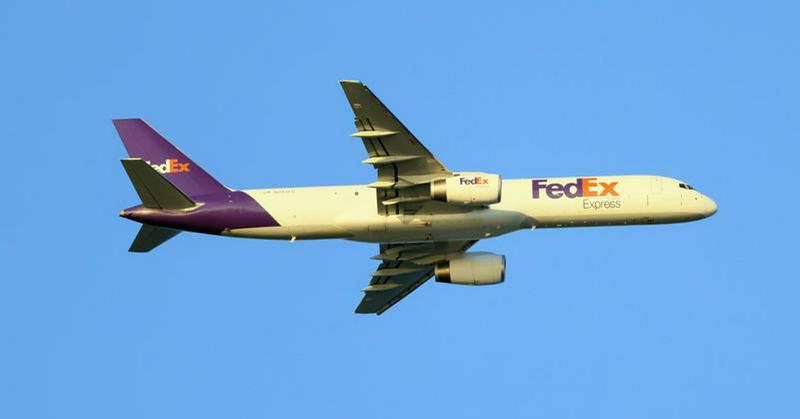The Harrowing Tale Of FedEx Flight 705
By | September 7, 2022

Auburn Calloway should have had everything going for him. As a former Navy pilot and graduate of Stanford University, he hoped to have a bright future as a commercial airline pilot. However, at the age of 42, the highest position he'd ever attained was flight engineer for FedEx, and he feared that he wouldn't be able to pay for his children's upcoming college tuition after having trouble ironing out his post-divorce finances. Even worse, he was due for an inquiry hearing at FedEx over possibly fudging his flight hours. If found guilty, he would have undoubtedly been dismissed from the company and blackballed from any commercial flying work in the future.
On April 7, 1994, Calloway decided to take his fate into his own hands, no matter the consequence. Emboldened by a life insurance plan that would pay over $2 million to his family if he died on the job, Calloway claimed the jump seat on a flight headed to San Jose with two club hammers, two claw hammers, a knife, and a speargun all concealed in a guitar case. As it was only a mail flight that took place years before the September 11 terrorist attacks, security for crew members was pretty lax.

Calloway's plan had likely been to attack his usual crew, which consisted of only one man and one woman, who he could likely have subdued with his weapons and extensive martial arts training, but as luck would have it, his regular crew was replaced after going over their crew day by a single minute. Those 60 seconds of overtime likely saved their lives, as the three-man crew who replaced them had to use every ounce of their strength to stop Calloway.
As the flight took off, working flight engineer Andre Peterson noticed the cockpit voice recorder had curiously been set to the "off" position, but he simply corrected it and thought little more of it. After about half an hour of flying, the cockpit door opened, and before anyone could react, all three men were bludgeoned with the club hammers. The captain, David Sanders, didn't know what was happening at first, later remarking that Calloway seemed eerily calm.
Both Peterson and Sanders unbuckled themselves in an effort to fight Calloway, but co-pilot James Tucker, Jr. had been hit in the head so severely that bone fragments from his own skull had pierced his brain, paralyzing much of the right side of his body. Though gravely injured, Peterson managed to grab the spear Calloway brandished and wrestle him into the hull, where Sanders joined the fight while Tucker rolled the plane to disorient the attacker.

Eventually, the two crew members subdued Calloway, but only after several minutes of hand-to-hand combat that left all three men bloody and bruised. Sanders called for Tucker to take his place, and despite the paralysis, he put the plane on autopilot, entered the hull, took hold of Calloway's speargun, and threatened to shoot him if he moved. Sanders had suffered a major brain injury that would require several surgeries and leave him unable to ever fly professionally again, but miraculously, he landed the plane at the nearby Memphis airport.
Once on the ground, a SWAT team arrived to arrest Calloway and were horrified by the sight of blood covering the floor, walls, and even ceiling, thanks to Tucker's rolling maneuvers. All crew members survived, though they were in no shape to fly again, and were given the Gold Medal Award by the Air Line Pilots Association for their heroic actions. Calloway was convicted of attempted murder and air piracy for trying to hijack the plane and sentenced to life without parole.

